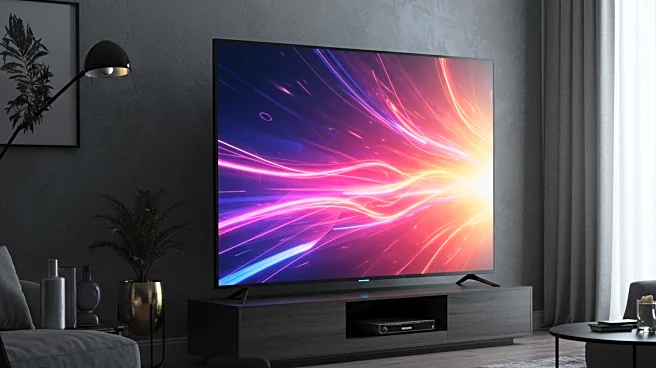What's Happening?
Streaming services continued to dominate TV viewing in July 2025, according to Nielsen's Media Distributor Gauge. Streaming accounted for 47.3% of TV usage, marking a 1.3% increase from June. YouTube led the streaming services with 13.4% of all viewing, showing a 0.6% growth from the previous month. Netflix followed with 8.8% of total streaming consumption, improving by 0.5% from June. Cable TV experienced the largest decline, dropping by 1.2% to 22.2%, while broadcast TV remained relatively stable at 18.4%. The linear segment, combining broadcast and cable, showed a 40.6% share, highlighting the growing gap between traditional TV and streaming services.
Why It's Important?
The continued rise of streaming services signifies a shift in consumer preferences, impacting traditional TV networks and cable providers. As streaming platforms like YouTube and Netflix gain more viewers, they attract more advertising revenue and investment, potentially leading to further innovation and content creation. This trend challenges cable and broadcast networks to adapt by enhancing their digital offerings or risk losing market share. The shift also influences media consumption habits, with implications for advertisers, content creators, and the broader entertainment industry.
What's Next?
As streaming approaches the 50% mark of all TV viewing, traditional networks may need to reconsider their strategies, possibly increasing their focus on digital platforms or forming partnerships with streaming services. The competition among streaming platforms is likely to intensify, prompting them to invest in exclusive content and technological advancements to attract and retain subscribers. Additionally, regulatory bodies might examine the implications of streaming dominance on media diversity and competition.
Beyond the Headlines
The dominance of streaming services raises questions about the future of media consumption and its impact on cultural trends. As more viewers shift to on-demand content, traditional TV programming schedules may become obsolete, altering how audiences engage with news, sports, and entertainment. This evolution could lead to changes in advertising strategies, with a focus on personalized and interactive content.











